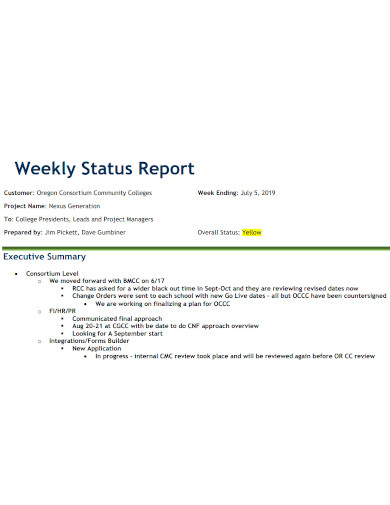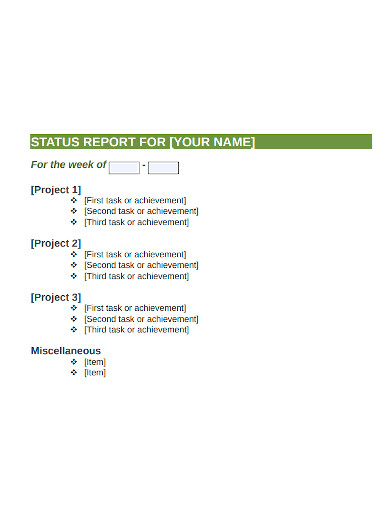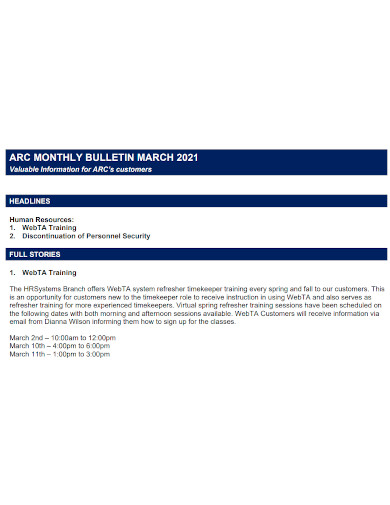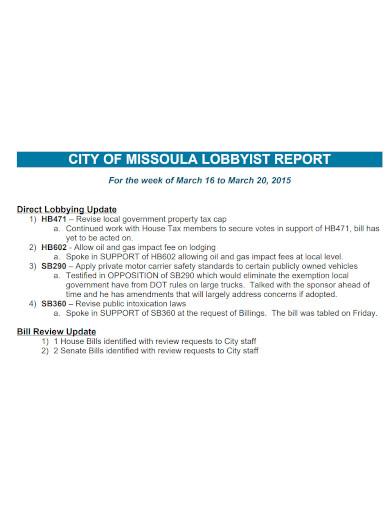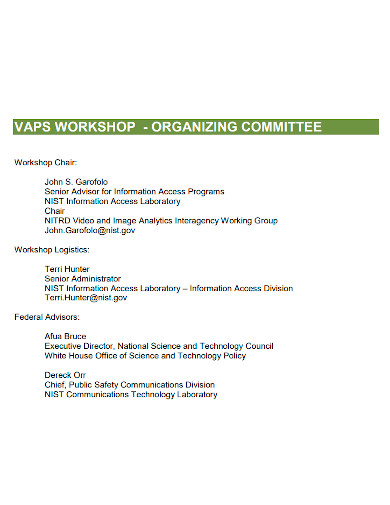Various companies and organizations use status reports to keep track of their employee’s progress and productivity in a certain amount of time. This ensures that tasks are well distributed all throughout the workforce supervised by the right team leaders or directors, and that productivity is constant and no one is slacking off. The most common time frame for a status report to be in is in a week. Weekly status reports usually cover what has been done by the team in a week in terms of completing tasks and activities for projects and just overall performance.
Weekly status reports are a complete overview of the your week as an employee at work. It covers tasks and projects you have completed, ones that are still in progress, and tasks for the future. Weekly status reports have to be free from grammatical, spelling, and typographical errors, before submitting it to your supervisor, since it has to clearly reflect the employee performance. Drafting one can be too much work, since it involves writing, rewriting, rereading, and so on, and so forth. Fortunately, it doesn’t have to be the case for you, with these employee weekly status report samples, you can now scratch off the mind numbing process of laying out and design, and just follow one or two samples for your weekly report prep!
7+ Employee Weekly Status Report Samples
1. Employee Weekly Status Report Sample
2. Printable Employee Weekly Status Report
3. Standard Employee Weekly Status Report
4. Formal Employee Weekly Status Report
5. Professional Employee Weekly Status Report
6. Employee Weekly Status Report Format
7. Basic Employee Weekly Status Report
8. Editable Employee Weekly Status Report
What Is an Employee Weekly Status Report?
Weekly status reports cover the status of the projects and the tasks delegated to the employee in a week’s time. For an employer’s perspective, a status report give a quick snapshot of what their employee has been doing and then assigns other responsibilities based on these observations. It also reports how the employee managed to get over challenges that they encountered in the workplace, and how far along the project has gone under him.
Weekly status reports help the management make informed decisions regarding the assignments, employee strengths, weaknesses, training and development. Employees, on the other hand, can get an idea of what role they are actually playing in the organization and in the project they are conducting. It can also provide a better sense of how you are pacing things and how you can get better at it.
How to Write an Employee Weekly Status Report
It is quite an important document, especially if your employers require a report every end of the week, and it can be quite a stressful task to accomplish, especially if you are just a little bit short on preparation. You might lack some key details from a few days back, or your generally just having trouble drafting it in a direct and concise manner. The writing part would be much easier if the process is dismantled into 5 simple steps;
- Establish your report’s purpose
First of all, outline all the objectives of the report before actually writing it. It helps you decide what goes into your report. What does your supervisors exactly want to see? So figure that out even before you start and it should be the same every week thereafter, unless the management specifically informs you otherwise. Most usually, general objectives are to inform the management, stakeholders, project owners, or whoever your reader is, the progress of the project at hand and its current status prior to completion. The week’s accomplishments, issues and challenges encountered, along with the goals for the next week. Timeline related updates, schedules, resources, scope, and deliverables. - Familiarize your role
One more thing to keep in mind before actually drafting is that you have to make sure that you are crystal clear with your responsibilities all around. Also ensure that you understand the project you are handling and know exactly what the definition for success is for the project. Having trouble getting to a conclusion? Go talk to your team leader or supervisor, or manager first. - Work on the layout
Don’t assume that putting a few paragraphs on a document makes a sufficient report, because it doesn’t. The layout of your report is important because it keep it short, concise, straight to the point, and visually appealing. Since it’s a weekly report, it is wise to use a layout with sections dedicated to each day of the week. A weekly report template can give you a pre-made layout. - Key characteristics of a weekly report
Be sure to be concise and report in as few words as possible. Don’t use clichés ang work jargons, simple language should be more than enough. And be sure to be transparent to your manager, give results, may it be good or bad, just for them to have a good scope of the situation and assured that no chaos is breaking loose behind their backs. - Keep these details in mind
- Give a brief summary of the project or its objectives
- Date, proper dating and format makes it a lot easier for your manager to go through your reports in a chronological order
- Deliverables, or what you did each day
- Headline or Title of your report
- Tasks, outline what you had to do for the whole week. Give the management an idea of what tasks were delegated to you so they can measure your progress properly.
- Highlight your results, progress, and goals achieved.
- Talk about challenges and roadblocks you have encountered while accomplishing your tasks.
- And lastly, talk about what plans you have for the next week, what you aim to complete, and how to determine that progress has been made or that the project is done.
FAQs
What is a weekly progress report?
A weekly progress report gives a week by week summary of what has been accomplished in the whole week and what tasks remain to be completed.
What is the purpose of weekly report?
Reports such as this help managers observe the tasks and the progress made by the employees and the whole company. It helps keep track of goals and whether these goals have been completed or not, or will it even be possible to complete. it reviews the performance of a team or an individual and lets managers intervene when problems begin to arise.
What is a daily work report?
Just like a weekly report, its a document prepared by employees to submit to their supervisors and team leaders. It usually contains details on how they spent their work day and achievements or challenges encountered throughout the day.
Weekly reports are not only beneficial to the employees, but to the whole organization or the whole company as well. It provides and maintains a comprehensive report of the contributions of all employees. And with that, you are now well equipped to have to never write another boring weekly report. Hopefully, all the tips provided as well as the samples are enough to help you write a proper amazing weekly report.
Related Posts
FREE 14+ Sample Status Reports
FREE 14+ Sample Project Status Reports
FREE 14+ Sample Useful Project Status Reports
FREE 12+ Sample Performance Reports
FREE 12+ Sales Call Report Samples
FREE 12+ Sample Construction Progress Reports
FREE 10+ Team Report Samples
FREE 8+ Accomplishment Report Samples
FREE 6+ Sample Staff Report Templates
FREE 39+ Sample Reports
FREE 20+ Sample Time Card Calculator Templates
FREE 19+ Sample Project Management Reports
FREE 10+ Facilities Management Report Samples
FREE 10+ Adjustment of Status Samples
FREE 10+ Kindergarten Progress Report Samples


